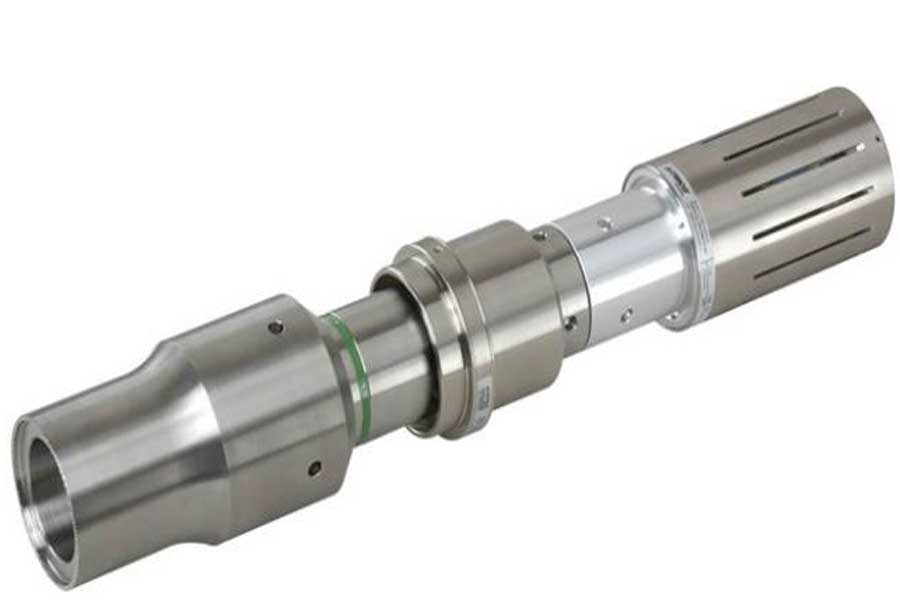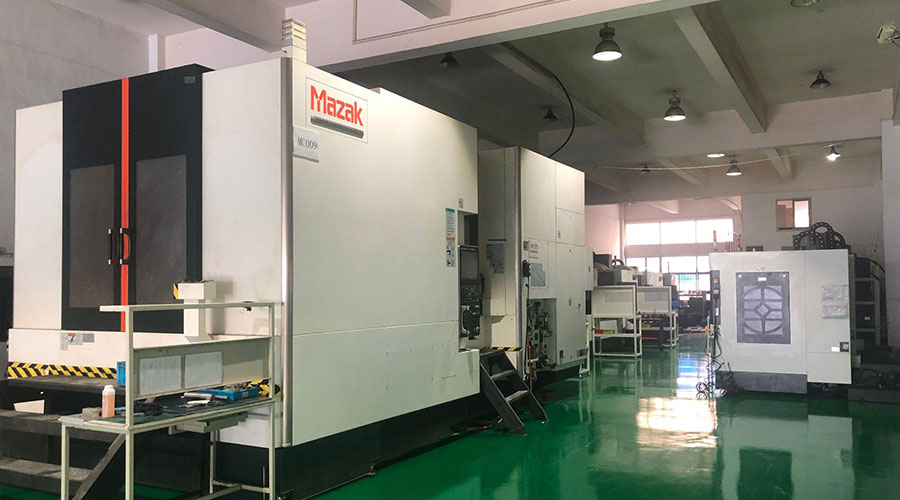As equipment becomes more and more complex, ultrasonic welding is playing an increasingly important role in the medical industry, including global medical equipment including drug delivery equipment, orthopedic surgical instruments, chest drainage tubes and catheters. These devices are increasingly composed of smaller, lighter plastic components, and may contain other components that place additional requirements on the joining process. Although more traditional fastening methods can be considered, processors find that ultrasonic welding has obvious advantages.
To meet the high standards of the medical industry, ultrasonic welding manufacturers are developing unique technologies to meet all the requirements for repeatable and consistent welds in these smaller and more complex systems (including clean room technology). This is thanks to the recording software used for verification purposes and quality assurance monitoring, so that the highest quality welding results, carefully selected tool materials and absolute process control can be achieved.
The growing demand for faster delivery and highly complex welding applications has resulted in welding manufacturers bringing in new capacity. The supplier has transferred the ultrasound tools in-house to assume full control of its medical customers’ documentation, testing, and other key program functions.

Rinco’s Electric Motion 20 kHz desktop welder with generator and controller is used for welding medical stethoscopes.
The key technical considerations for connecting medical devices include materials, process parameters, and part design. Amorphous materials (such as ABS, PS and PC) are often easier to weld due to their melting point characteristics. They tend to soften and gradually reach the glass transition through their rigid state, then into a rubbery state, and then into a true molten state. Their curing is also gradual.
At the same time, semi-crystalline materials such as nylon, PP and PE have very high melting points and require more energy to achieve. The freezing is just as sharp.
After determining the applicable materials, parts need to be designed with appropriate joints. For example, a shear joint used for hermetic sealing after welding, or a simple energy director that bonds two parts together. Ultrasonic welding suppliers can evaluate the design of ultrasonic tools suitable for the application based on the materials used and the functions of the final product.
Ultrasonic welding of today’s complex medical equipment and its many internal components and ergonomic design requirements (to make the doctor or surgeon feel comfortable) also make the tools more complex. The application requires not only the assembly of parts, but also the appropriate amount of output amplitude to melt the material.
Troubleshoot
The figure shows a typical complex ultrasonic horn, which consists of a large female horn and 13 extended horns (usually called composite horns). The contour of the expansion pad is milled to match the details of the part, and each expansion pad is timed to the correct position to allow correct contact on the part.
When using this type of horn for medical parts, many troubleshooting issues may arise:
▪ A common speaker problem is the mark on the part, which ranges from small scratches to discoloration of the material. Part marking may be the result of changes in the dimensions of the molded part or the addition of additives during the molding process. It is recommended that the processor check the part size and molding conditions.
▪ Another problem may be the alignment between the part and the speaker. For all horns, the alignment between the horn and the parts and fixtures is critical. If the extension rods on the composite pad are not aligned, you may need to realign the tool. Check the extender and make appropriate adjustments.
▪Corner surface damage caused by wear or damage to the surface contacting the fixture without parts may also cause marking or component failure. Uncoated (raw) aluminum horns will release aluminum oxide and cause a black residue on the part, which is most common on white and light-colored parts. This can be solved by electroplating or hard coat anodizing of aluminum corner chromium to stop the oxidation of aluminum.
Solve the noise problem
Under normal circumstances, the horn can operate normally for a period of time, but it may slowly produce high-pitched noise. Now it may be time to check the components made up of the converter, booster and horn. Unloading the stack and each component is the starting point.
The stack assembly (from r to l) consists of a converter that absorbs electrical energy from the generator and converts it into mechanical motion: a supercharger (intermediate part), which regulates the mechanical motion of the converter. And the ultrasonic horn customized for the application.
Next, look at the mating studs (threaded rods between each component) to see if they are loose or broken. They can be taken out and wiped with alcohol, and then blown off with clean, dry compressed air. It is also recommended to use rubbing alcohol and nylon brushes to clean the stud holes. The mating surface can also be blown off with clean dry air. If any of the mating surfaces shows any traces or small scratches, you can use 600 grit wet/dry paper for light sanding. Remember to lightly sand to avoid cracks and make the mating surfaces parallel. In extreme cases, it may be necessary to machine the mating surface.
Noise issues may also be related to stacked components that are not tightened to the torque specified by the manufacturer. Loose stack components or over-tightened components can cause noise problems. If the noise is generated by the welding machine and the operator is uncomfortable, it is recommended to use an acoustic enclosure. Noise problems are common in larger parts and in applications where brass inserts are ultrasonically inserted into plastic housings.
If the generator produces a horn failure or frequency error, please check for loose stack components or damage to the studs. If the horn is in the original position (not touching the parts), please make sure whether the ultrasonic test can be performed. If so, press the test button on the generator to see if the horn is running in the air. If not, please disassemble the stack assembly and try again. If the generator fails again during the ultrasonic test, try a spare speaker and see if the problem resolves itself. Otherwise, the problem may lie in the converter or booster.
If the spare horn is valid, the original horn should be checked for cracks or damage. Cracks are sometimes easy to find, while other cracks may occur internally. If the horn is not operating and there are no signs of cracks, the horn needs to be further tested with a horn analyzer. The horn analyzer can better judge whether the horn is broken. For example, a 20 kHz horn that reads 19,750 Hz will prove that the horn has broken. Another way to diagnose a broken horn is to use a chemical and dye system.
Solve overheating
Dirty speakers, poor parts materials or speaker design may cause heat buildup. Most of the heat accumulation problem comes from the speed of the application, because ultrasonic treatment is based on friction, which generates heat and causes the plastic to melt and bond. Switching to more forgiving materials can reduce heat build-up. You can also consider a new speaker design.
Increasing cooling can usually solve the heat problem. Clean, dry compressed air can be blown onto the chimney surface and the mating joints of the chimney assembly. Generally, only 3-5 psi of compressed air is sufficient to reduce the heat in the horn and chimney. Remember, if the heat problem is not resolved after a period of time, it will spread to the inverter and eventually cause internal components to malfunction. A good rule of thumb for air cooling: If the welding head is in its original position, the ultrasonic is turned off (the end of the welding cycle), and you cannot hold the welding head with your hands, you need to air-cool it. Under certain extreme conditions, cold air can be used.
Inappropriate welding head rework can also cause many different problems. If the horn has been processed to repair worn surfaces or slightly modified due to replacement of parts, it is very important to have the right equipment for horn scanning. Any modification to the horn may cause uneven amplitude on the surface of the horn, thereby increasing or decreasing the operating frequency of the horn. These problems can cause the chimney and other components in the welding system to malfunction. It is strongly recommended that the manufacturer make modifications and rework in order to take appropriate steps to ensure the normal and effective operation of the horn.
Link to this article:Can ultrasonic welders meet the challenges of medical processing?
Reprint Statement: If there are no special instructions, all articles on this site are original. Please indicate the source for reprinting:https://www.cncmachiningptj.com/,thanks!
 3, 4 and 5-axis precision CNC machining services for aluminum machining, beryllium, carbon steel, magnesium, titanium machining, Inconel, platinum, superalloy, acetal, polycarbonate, fiberglass, graphite and wood. Capable of machining parts up to 98 in. turning dia. and +/-0.001 in. straightness tolerance. Processes include milling, turning, drilling, boring, threading, tapping, forming, knurling, counterboring, countersinking, reaming and laser cutting. Secondary services such as assembly, centerless grinding, heat treating, plating and welding. Prototype and low to high volume production offered with maximum 50,000 units. Suitable for fluid power, pneumatics, hydraulics and valve applications. Serves the aerospace, aircraft, military, medical and defense industries.PTJ will strategize with you to provide the most cost-effective services to help you reach your target,Welcome to Contact us ( [email protected] ) directly for your new project.
3, 4 and 5-axis precision CNC machining services for aluminum machining, beryllium, carbon steel, magnesium, titanium machining, Inconel, platinum, superalloy, acetal, polycarbonate, fiberglass, graphite and wood. Capable of machining parts up to 98 in. turning dia. and +/-0.001 in. straightness tolerance. Processes include milling, turning, drilling, boring, threading, tapping, forming, knurling, counterboring, countersinking, reaming and laser cutting. Secondary services such as assembly, centerless grinding, heat treating, plating and welding. Prototype and low to high volume production offered with maximum 50,000 units. Suitable for fluid power, pneumatics, hydraulics and valve applications. Serves the aerospace, aircraft, military, medical and defense industries.PTJ will strategize with you to provide the most cost-effective services to help you reach your target,Welcome to Contact us ( [email protected] ) directly for your new project.
Link to this article:Can ultrasonic welders meet the challenges of medical processing?
Reprint Statement: If there are no special instructions, all articles on this site are original. Please indicate the source for reprinting.:Cut Wiki,Thanks!^^
